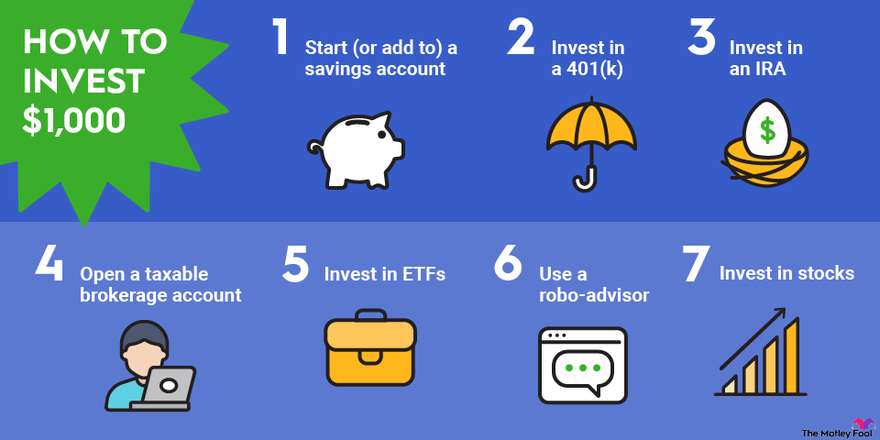How to invest with $1000?

Investing with $1000 is a great way to start building your investment portfolio. While it may seem like a small amount, there are several options available to get started. Here are some suggestions for investing $1000:
Start with a High-Interest Savings Account: If you don't have an emergency fund, consider putting your $1000 into a high-interest savings account. While this may not be a traditional investment, it provides a safe place for your money to grow while you explore other investment options.
Invest in a Mutual Fund: Mutual funds allow you to pool your money with other investors to invest in a diversified portfolio of stocks, bonds, or other assets. Look for low-cost index funds that track the performance of a broad market index, such as the S&P 500. These funds often have lower fees and can provide exposure to a wide range of stocks.
Consider Exchange-Traded Funds (ETFs): ETFs are similar to mutual funds but trade on stock exchanges like individual stocks. They offer diversification, flexibility, and generally have lower expense ratios than mutual funds. Look for ETFs that align with your investment goals and have a track record of consistent performance.
Invest in Dividend-Paying Stocks: Consider purchasing individual stocks of well-established companies that pay dividends. Dividend stocks can provide a regular income stream and the potential for capital appreciation over time. Do your research, analyze the company's financials, and consider their dividend history before making any investment decisions.
Robo-Advisors: Robo-advisors are automated investment platforms that use algorithms to create and manage a diversified investment portfolio based on your goals and risk tolerance. Many robo-advisors have low minimum investment requirements and charge lower fees compared to traditional financial advisors.
Peer-to-Peer Lending: Peer-to-peer lending platforms allow you to lend money to individuals or small businesses in exchange for interest payments. While it carries some risks, it can provide an opportunity for higher returns compared to traditional savings accounts.
Education and Skill-Building: Investing in yourself is also a form of investment. Consider using your $1000 to enhance your knowledge and skills in areas that can lead to better career opportunities or higher income potential. This could include taking courses, attending workshops, or purchasing books related to your field of interest.
Remember that investing involves risks, and it's important to diversify your portfolio, do thorough research, and understand your risk tolerance before making any investment decisions. If you're unsure or uncomfortable making investment choices on your own, consult with a financial advisor who can provide personalized guidance based on your financial goals and risk tolerance.
Comments
Post a Comment